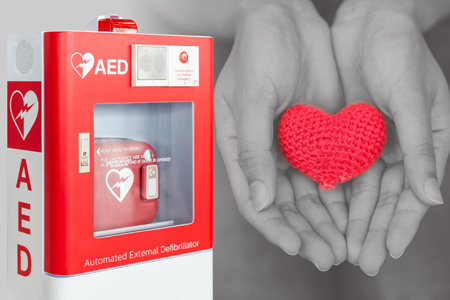What Is SCA?
Sudden Cardiac Arrest (SCA) is a public health issue. It is the condition in which the heart unexpectedly ceases to function. If not treated within minutes, SCA results in death.
SCA is the #1 killer of student athletes and contributes to the #2 medical cause of death under age 25. It’s the leading cause of death on school campuses. Thousands are stricken annually, with 9 out of 10 youth lost—on the field or playground, in the gym or classroom, and even at home in bed.
Most people don’t recognize SCA when it occurs in young people nor do they know how to respond to it. Communities don’t realize that with increased access to Automated External Defibrillators (AEDs) wherever youth congregate, as well as trained individuals in Cardiopulmonary Resuscitation (CPR), we will save lives.
What causes SCA? Sudden Cardiac Arrest is frequently the outcome of an underlying heart condition. These conditions go undiagnosed because heart screenings are not a standard part of well-child checkups or pre-participation sports physicals. One in 300 youth has an undetected heart condition that puts them at risk. Some conditions are congenital (present at birth) and some develop as young hearts grow. Many conditions can be hereditary.
These types of heart conditions cause electrical or structural abnormalities that trigger a fatal arrhythmia that suddenly stops the heart. When this occurs, blood stops flowing to the brain and other vital organs, causing loss of consciousness or seizure-like activity within seconds.
SCA can also occur secondary to other conditions such as impact to the chest, a viral infection in the heart, heat stroke, asthma, drowning, electrocution, allergic reaction, or medication.
SCA is not a heart attack, which typically does not occur in people under 35. A heart attack happens when a blockage in a blood vessel interrupts the flow of oxygen-rich blood to the heart. SCA is indiscriminate as to age, race or gender and kills over 350,000 Americans each year. Victims of SCA may never experience any warning signs so communities must be prepared to respond quickly.
For more information regarding the causes of SCA and how to prevent it, please visit parentheartwatch.org
What's the best way to treat SCA?

If not treated within minutes, SCA results in death. A normal heart rhythm can only be restarted with defibrillation—an electrical shock that is safely delivered to the chest by an AED.
Chances for survival decrease by 10 percent for every minute defibrillation is delayed, and the first person on the scene of an SCA event is in the best position to save a life, if they have an AED. According to a recent study from the University of Washington, out-of-hospital SCA survival rates are between 5 and 10 percent; however, when CPR and AED are used immediately, it jumps to 64 percent.
The Cardiac Chain of Survival
Five critical steps to saving an SCA victim
RECOGNIZE SCA
CALL 911
START CPR
USE AN AED
DIRECT EMS
Contact Us
Please complete the contact form or contact:
Michele Snyder
michelesnyder525@gmail.com
847-612-4607
